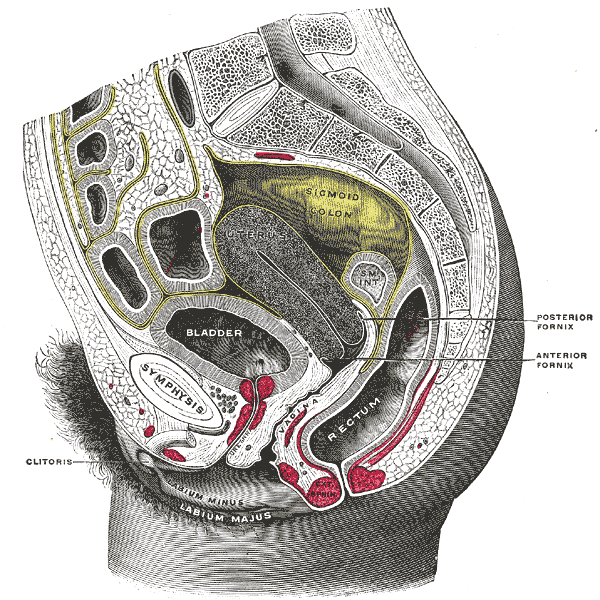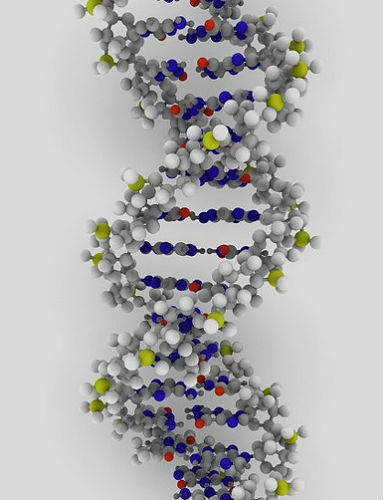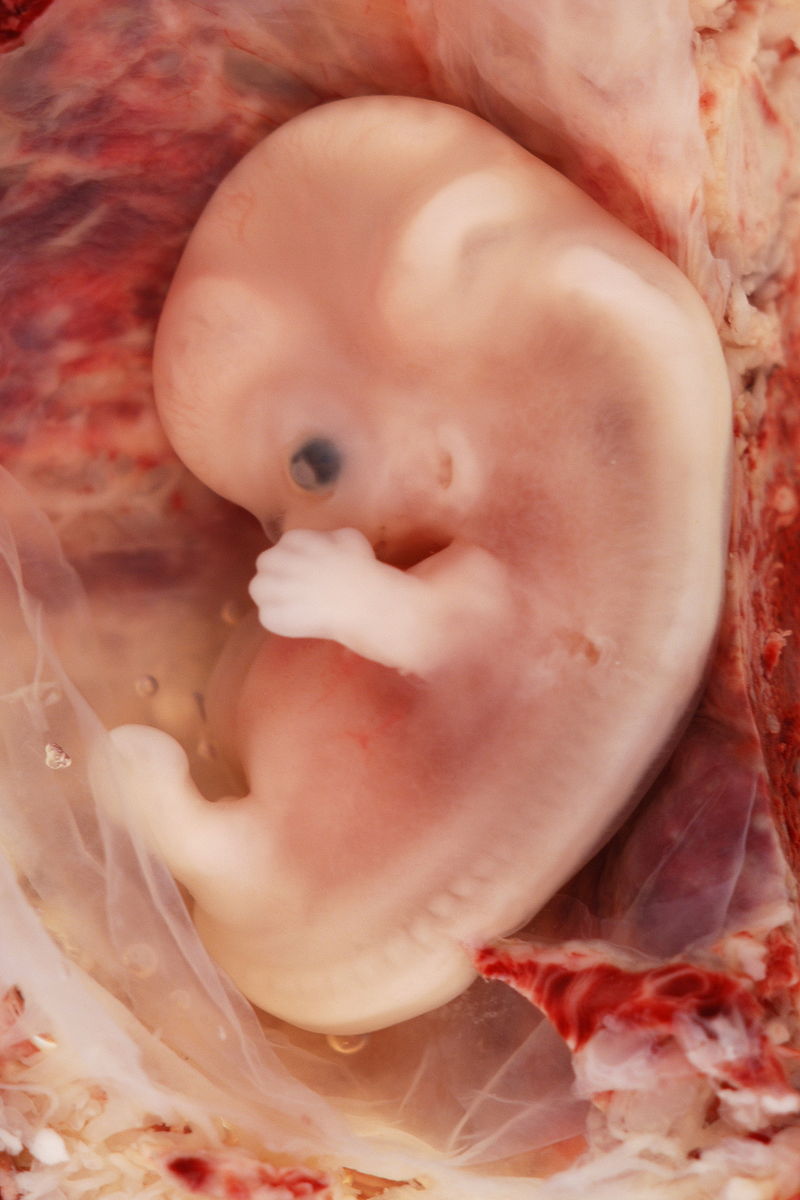Twins
Article curated by Rowena Fletcher-Wood
This article is based on our blog post on the subject.
Scientists are very interested in twins because it helps us identify the differences between genetic and environmental factors that influence health and behaviour. They’ve been used to compare diets, decisions, the emergence of diseases like schizophrenia – even whether g-spots are a real thing!

Identical twins can be used for all kinds of research, including identifying which diseases or traits show a probability of being genetically expressed, or have an environmental trigger – such as handedness or type I diabetes[1]. By comparing identical and non-identical twins, scientists have been able to tease out the statistical differences that are due to genetics compared with similar environmental triggers. The measure of concordance between identical compared to non-identical twins tells us the index of heritability – or how genetic something is.


 2
2Genetics versus environment



Schizophrenia research has also benefitted from twin studies. The mental illness is characterised by sufferers retreating into themselves, struggling with normal social behaviour, and experiencing delusions, confusions and/or hallucinations. Most experts attribute the disease to an environmentally-prompted expression of genetics. However, no single gene has been identified, and scientists think a (so far unidentified) combination of genes is more likely. The idea that it needs environmental triggers is supported by studies in twins, that show both do not always express it, even when they are identical[3]. However, as yet researchers have identified no cause or indicator of increased risk of schizophrenia of any kind, only some environmental triggers, which themselves are difficult to measure and regulate.


 2
2The exact causes of Autism Spectrum Disorder (ASD) are unknown, with many speculating whether it is indeed a disorder or personality extreme. However, most agree that the social and communication limitations it imposes do classify it as a condition. In a few cases, another medical condition is thought to be a trigger, such as tuberous sclerosis, which can produce brain tumours that have triggered autism. However, this is rare. Other environmental triggers are being explored, and identical twins with autism are being studied to help identify these triggers. Around 60% of the time, if one identical twin has autism, so does the other., so genetics is probably a factor – but conditions during the mother’s pregnancy could be another. For example, viruses in the mother such as rubella increase the risk of autism, as does the mother smoking. Not only is it not known what causes it, how these effects produce the symptoms is also debated. Other scientists are interested in comparing the brains rather than genetics of those with autism, including projects such as the brain bank for autism. The more brain tissue available for research, the better the chances of uncovering how the developing brain is altered.


 3
3Autoimmune diseases also have both genetic and environmental factors[4]. Amongst pairs of identical twins, sometimes just one develops the autoimmune disease, and sometimes both[5]. Again, one type of environmental factor associated with autoimmunity is infection. Exposure to numerous common viruses has been linked as a risk factor for developing autoimmune diseases, but why some people develop them (or why it’s more common in women) remains to be solved. We’ve blogged about this one as well.


 3
3

 2
2
The way we think is also genetic, and again, we know this because of twins. Financial researchers have shown that identical twins make more similar financial decisions than non-identical twins when it comes to factors like taking risks, investing, and giving to charity. Of course, environmental and situation factors can also play a role (no one makes the same decision all the time every time!). Researchers estimate a fifth to a half of the decision is genetically driven.


100% identical?
As it turns out, identical twins are not 100% genetically identical[6]. Some identical twins show mirroring, where they have opposite features, for example. We’re not sure why, but mapping differences between identical twins could tell us about exactly when the parent egg split into two.


Another thing that identical twins don’t have in common is their fingerprints. Yes, right from birth, twins have unique fingerprints, just like everybody else – and we have no idea why. This tells us fingerprints are not fully genetic. Scientists think they develop in the intrauterine environment, and are affected by factors including hormonal levels, nutrition, blood pressure, position in the womb and first trimester growth rate. This means that minor differences in fingerprints arise from random local events during fetal development. And, believe it or not, after birth, other environmental factors change our fingerprints subtly throughout our lives!

 2
2Types of twins



 2
2
One theory is dispermic fertilisation[8][9], where an egg is fertilised by two sperm, and then splits, so each sperm ends up in a different twin, but the two share an egg. However, it is more normal if an egg is doubly fertilised that a second set of genetic data persists – and, if this happens, the foetus or foetuses die. We’re still unsure whether dispermic fertilisation is possible – at least, in humans.


Another theory is polar body fertilisation[10][11]. What’s that? Polar bodies are made during mitosis (the process that makes egg and sperm cells) when cells split unevenly, creating one strong daughter cell (an egg), and one that doesn’t have enough nutrients in it to survive. Mostly, polar bodies disintegrate. However, sometimes they do survive and persist, and scientists think these may have the ability to be fertilised. Theoretically, you could get sesquizygotic twins from an egg and polar body if they were fertilised by two different sperm. However, since polar bodies are weak, scientists aren’t even sure if they have enough nutrients to develop into a living foetus.Nevertheless, fertilisation of this kind might explain why chimerism happens in twins.


 2
2Chimerism is a strange phenomenon where cells with the DNA of one person are found in the body of another. Apparently, the effect has been extensively studied in marmosets. Research suggests we actually all carry bits of other people around in our bodies. In particular, remnants of DNA of the mother have been found integrated in the brain of the child and vice versa[12][13][14]. Exchange of cells occurs across the placenta that mixes mother and baby's blood during pregnancy. It is also possible that some exchange occurs during nursing, and older siblings can pass cells to younger ones. Male cells found in the brains of some women are notably fewer amongst women with Alzheimer's, suggesting they contribute to brain health. Why this happens is a mystery: in general, women who have had more pregnancies are statistically more likely to get Alzheimer's – so the opposite would be expected: more foreign cells from the babies they carried, not fewer. Some scientists think they contribute to healing and repair: the cells are most similar to stem cells and have been linked to a lower probability of cancer, although to a higher probability of multiple sclerosis. What the microchimeric cells do and how benign they are remains unsolved.



Chimerism might even explain “vanishing twin syndrome”, when one twin is mysterious absorbed by another. It’s thought this might happen if one twin was a fertilised polar body, and not sufficiently strong to survive. If the twins are fraternal, and have different DNA; this can lead to an individual born with two sets of DNA in different parts of their body (and this can be anywhere)! Some people show “blood twinning”, where two distinct blood types are found[15]. In twins, this occurs around 8% of the time, and in triplets, in 21% of cases[16].


 2
2
So, if it’s possible for one twin to absorb another, does that mean extra limbs could actually be vestiges of an absorbed twin? DNA tests have supposedly shown that these can sometimes have their own sets of DNA: just like a fraternal twin[17]. However, there may still be further explanations for these observations.


Conjoined twins may arise from fission or fusion. There is currently no certain evidence for fission, but some for fusion in a few cases[18]. This is further supported by the fact that most conjoined twins are attached at the chest and share a heart – one of the last organs to develop[19]. Scientists think fusion might also explain external heteropagus twins[20], where one depends on the other for survival. It could be the result of incomplete splitting instead: the idea is that if the egg splits too late (after 2 weeks), it doesn’t fully manage it, resulting in the development of two humans that may share some organs. Nevertheless, we remain in the dark about why conjoinment happens, or what drives the extent of it[21].


 2
2Conjoined twins show high degrees of mirroring. This is a strange phenomenon in twins where identical twins look like mirror images of each other, and may even have situs inversus (organs on opposite sides)[22][23]! Complete mirroring is rare, but most pairs of identical twins show it to some extent. Scientists think this might tell us how early the egg split in half, with full mirror image twins resulting from a late split[24]. However, not all scientists agree that it is due to timing.


Some fraternal twins may arise through the phenomenon known as superfetation – the phenomenon of becoming pregnant whilst already pregnant! It’s been reported in humans, hares, badgers, mink, panthers, buffalo, wallaby, rats, mice, rabbits, horses, sheep, kangaroos, sugar gliders and cats… but much of the evidence is dubious, and remains controversial. The only agreed incidents seem to be documented in fish. It’s usually diagnosed when “discordantly developed young” are seen with separate amniotic sacs that can’t be explained any other way, but there have never been discordantly developed young documented that are more than a few weeks apart in growth. This means it’s quite possible the discordant growth is caused by something else not yet accounted for. Doctors have suggested placental insufficiency, twin-to-twin transfusion, or embryonic diapause. It may be a reproductive strategy to maximise numbers of offspring, but if so, we don’t know why it’s so rare or what triggers it. Scientists have attempted to classify superfetation into three groups: 1. Superfertilisation (or superfecundation) describes the fertilisation of two or more ova by two different males. It happens when there are two or more eggs released together in one cycle, and two sexual acts within the fertility window. The result is twins babies with different biological fathers. 2. Superconception – what happens in “permanently pregnant” hares. Towards the end of pregnancy, the female ovulates and mates. Researchers have shown this ovulation using high-resolution ultrasound. After giving birth, the egg then implants in the now-available womb. 3. In superfetation proper, a second ovulation cycle, or several subsequent ovulation cycles, happens during pregnancy, and a second foetus or litter is conceived. This produces two babies or litters, the younger of which is at risk of premature birth. This is most likely to happen when the female has two uteruses, or if implantation of the first embryo is delayed, so cycle-suppressing hCG hormones come too late. In humans, superfetation proper generally happens after fertility treatment, when a woman’s natural cycle isn’t sufficiently suppressed. There’s more about superfetation in our blog post on the subject.


 3
3
One of the more unusual types of twins is fetus in fetu, or one twin entirely inside another. Obviously, this does not lead to a second living foetus, but is estimated to happen in 1 in every half a million live births[25]! They seem to be more common in females and in babies, suggesting a connection with early development and rapid cell division. Some scientists have doubts whether the the internal twin is actually a twin at all. It’s been suggested it may be a teratoma: a type of tumour that forms into whole organs or tissues such as hair[26]. We still have a lot to learn about these tumours, so it’s a possibility. For example, we don’t understand why they happen nor why they are usually benign (but not always – see this article on “fetus in fet with malignant recurrence” – ouch[27]!). Studying fetus in fetu – or teratoma – could help us in the battle against cancer.


 2
2
There are still lots of things we don't know about twins, but research on them could be life changing.
This article was written by the Things We Don’t Know editorial team, with contributions from Ellen Moran, Ginny Smith, Johanna Blee, and Rowena Fletcher-Wood.
This article was first published on 2021-07-22 and was last updated on 2021-07-22.
References
why don’t all references have links?
[1] Jerram, Samuel T, and Richard David Leslie. “The Genetic Architecture of Type 1 Diabetes.” Genes vol. 8,8 209. 22 Aug. 2017, doi:10.3390/genes8080209.
[2] Burri, A. V., Cherkas, L., & Spector, T. D. (2009). Genetic and Environmental Influences on self-reported G-Spots in Women: A Twin Study.
[3] Lichtenstein, P., Yip, B. H., Björk, C., Pawitan, Y., Cannon, T. D., Sullivan, P. F., & Hultman, C. M. (2009). Common genetic determinants of schizophrenia and bipolar disorder in Swedish families: a population-based study. The Lancet, 373(9659), 234-239.
[4] Vojdani A. A Potential Link between Environmental Triggers and Autoimmunity. Autoimmune Diseases. 2014;2014:437231. doi: 10.1155/2014/437231. Epub 2014 Feb 12. Review. PubMed PMID: 24688790; PubMed Central PMCID: PMC3945069.
[5] Bogdanos DP, Smyk DS, Rigopoulou EI, Mytilinaiou MG, Heneghan MA, Selmi C, Gershwin ME. Twin studies in autoimmune disease: genetics, gender and environment. Journal of Autoimmunity. 2012 May;38(2-3):J156-69. doi: 10.1016/j.jaut.2011.11.003. Epub 2011 Dec 15. Review. PubMed PMID: 22177232.
[6] Bruder, C. E., Piotrowski, A., Gijsbers, A. A., Andersson, R., Erickson, S., de Ståhl, T. D., ... & Dumanski, J. P. (2008). Phenotypically concordant and discordant monozygotic twins display different DNA copy-number-variation profiles. The American Journal of Human Genetics, 82(3), 763-771.
[7] Gabbett, Michael T., et al. Molecular support for heterogonesis resulting in sesquizygotic twinning. New England Journal of Medicine 380.9 (2019): 842-849.
[8] Giltay, J. C., Brunt, T., Beemer, F. A., Wit, J. M., Van Amstel, H. K. P., Pearson, P. L., & Wijmenga, C. (1998). Polymorphic detection of a parthenogenetic maternal and double paternal contribution to a 46, XX/46, XY hermaphrodite. The American Journal of Human Genetics, 62(4), 937-940.
[9] Golubovsky, M. (2006). Mosaic/chimeras and twinning in the current reproductive genetics perspective. Human Reproduction, 21(9), 2458-2460.
[10] Wakayama, T., & Yanagimachi, R. (1998). The first polar body can be used for the production of normal offspring in mice. Biology of reproduction, 59(1), 100-104.
[11] Fancsovits, P., Tóthné, Z. G., Murber, A., Takacs, F. Z., Papp, Z., & Urbancsek, J. (2006). Correlation between first polar body morphology and further embryo development. Acta Biologica Hungarica, 57(3), 331-338.
[12] Opstelten, R., Slot, M. C., Lardy, N. M., Lankester, A. C., Mulder, A., Claas, F. H., ... & Amsen, D. (2019). Determining the extent of maternal-foetal chimerism in cord blood. Scientific reports, 9(1), 1-10.
[13] Koopmans, M., Hovinga, I. C. K., Baelde, H. J., Harvey, M. S., de Heer, E., Bruijn, J. A., & Bajema, I. M. (2008). Chimerism occurs in thyroid, lung, skin and lymph nodes of women with sons. Journal of reproductive immunology, 78(1), 68-75.
[14] Kelly, S. E. (2012). The maternal–foetal interface and gestational chimerism: the emerging importance of chimeric bodies. Science as Culture, 21(2), 233-257.
[15] Booth, P. B., Plaut, G., James, J. D., Ikin, E. W., Moores, P., Sanger, R., & Race, R. R. (1957). Blood chimerism in a pair of twins. British medical journal, 1(5033), 1456.
[16] Van Dijk, B. A., Boomsma, D. I., & de Man, A. J. (1996). Blood group chimerism in human multiple births is not rare. American journal of medical genetics, 61(3), 264-268.
[17] Gul, A., Aslan, H., & Ceylan, Y. (2004). Prenatal diagnosis of pygopagus tetrapus parasitic twin: case report. BMC pregnancy and childbirth, 4(1), 1-7.
[18] Joyce, J. Cyril. "Dextrocardia, Situs Inversus, and Twinning." British medical journal 2.4945 (1955): 950.
[19] Mathew, Rishi Philip, et al. Conjoined twins–role of imaging and recent advances. Journal of ultrasonography 17.71 (2017): 259.
[20] Sharma, G., Mobin, S. S. N., Lypka, M., & Urata, M. (2010). Heteropagus (parasitic) twins: a review. Journal of pediatric surgery, 45(12), 2454-2463.
[21] Spencer, R. (1992). Conjoined twins: theoretical embryologic basis. Teratology, 45(6), 591-602.
[22] Newman, H. H. (1928). Studies of human twins: II. Asymmetry reversal, of mirror imaging in identical twins. The Biological Bulletin, 55(4), 298-315.
[23] Joyce, J. Cyril. "Dextrocardia, Situs Inversus, and Twinning." British medical journal 2.4945 (1955): 950.
[24] Kaufman, M. H. (2004). The embryology of conjoined twins. Child's Nervous System, 20(8-9), 508-525.
[25] Thakral CL, Maji DC, Sajwani MJ. Fetus-in-fetu: a case report and review of the literature. J Pediatr Surg 1998; 33:1432–1434.
[26] Higgins, Kimberly R., and Brian D. Coley. Fetus in fetu and fetaform teratoma in 2 neonates: an embryologic spectrum?. Journal of ultrasound in medicine 25.2 (2006): 259-263.
[27] Hopkins, Katharine L., et al. "Fetus-in-fetu with malignant recurrence." Journal of pediatric surgery 32.10 (1997): 1476-1479.
Blog posts about twins

Recent twins News
Get customised news updates on your homepage by subscribing to articles













